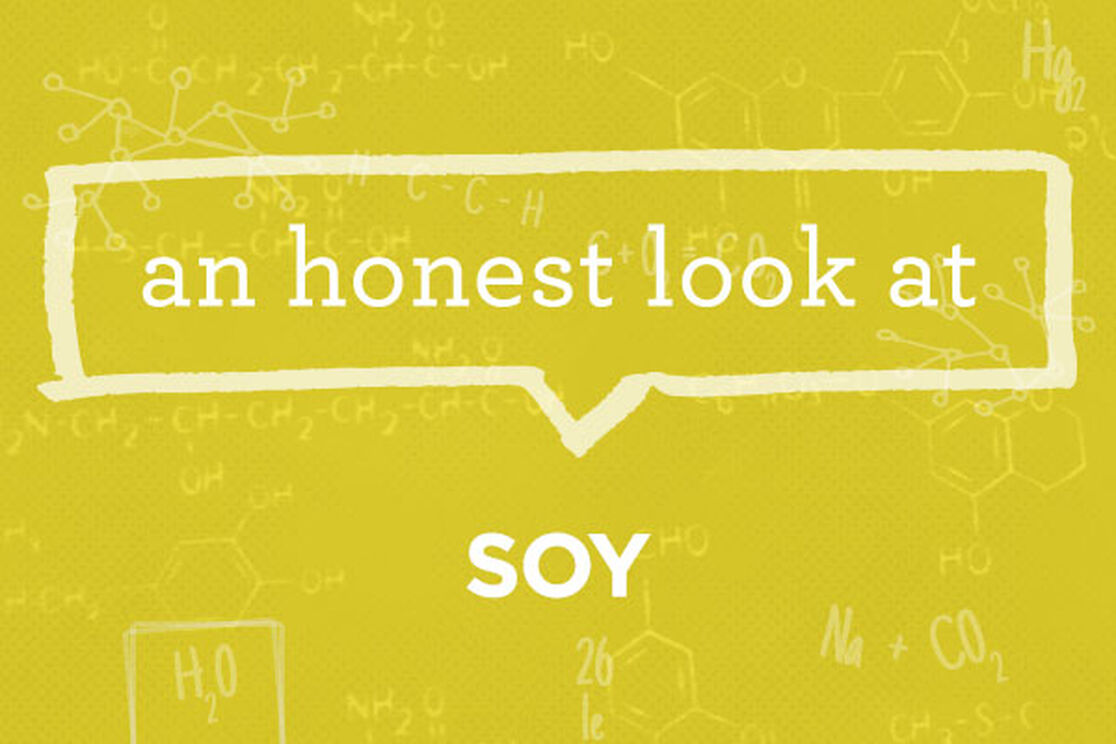This is part of our ongoing series helping consumers better understand chemicals, chemistry, and product formulations. We translate the science, bust the myths, and give you an honest assessment, so you can make informed choices for your family!
Ingredient:
Soy (also known as the soybean or glycine max)
What it is:
The soybean is a legume native to East Asia that’s now used worldwide and grown primarily in the U.S. and Brazil.
What it does:
Perhaps a better question is, ‘what can’t soy do?’ From soy milk, tofu, and tempeh to soy wax and soy-based textiles, these little legumes have innumerable uses and more versatility than perhaps any other plant. They also have a long, colorful history dating back thousands of years to when they were first grown as a crop in ancient China (estimates range from 3,000 to 5,000 years ago). Here’s a very brief timeline of their use in the U.S.:
- 1880 - Scientific studies on soybean nutrition begin (1).
- 1904 - Famed American chemist George Washington Carver discovers that soybeans are a valuable source of protein and oil, as well as a beneficial crop for preserving soil quality (2).
- 1929 - The first soy-based infant formula is introduced as a non-milk-based formula for infants allergic to cow's milk (3).
- 1970’s - The 1970s were a decade of increased public interest in nutrition in America. In 1971, Frances Moore Lappe publishes her seminal work, Diet for a Small Planet, birthing the vegetarian movement in the U.S. Further research on the nutritional value of soybeans increases with the demand for an alternative, healthier protein source (4).
- Today - A projected 83.5 million acres of cropland in the U.S. will be growing soybeans in the U.S. both for domestic use and exportation (5).
Why we use it:
With so many uses and such a long history of safety, using this renewable, affordable resource is a no-brainer (6,7). You’ll find it in the following Honest products:
- Soy oil is used to make the tocopherol found in our Belly Balm, Diaper Cream, Breathe Easy Rub, and Sunscreen Stick.
- Soy oil is used to make the tocopherol acetate in our Hand Sanitizer Gel.
- Soy oil is used to make the vegetable glycerin in our Fruit & Veggie Wash.
- Soy wax is used for our candles.
- With the launch of our Feeding line, we also chose to include soy oil and soy lecithin in our Premium Organic Infant Formula. We were thoughtful about creating an ideal balance of FDA-approved nutrients to optimize support of infant development and health when mom cannot breastfeed.
References:
- Shurtleff, W. & Aoyagi, A. (2014) Early History of Soybeans and Soyfoods Worldwide (1024 BCE to 1899). SoyInfo Center. Accessed on September 9, 2015 at http://www.soyinfocenter.com/pdf/178/Chr2.pdf.
- Shurtleff, W. & Aoyagi, A. (2012) History of Natto and Its Relatives (1405 to 2012). SoyInfo Center. Accessed on September 29, 2015 at http://www.soyinfocenter.com/pdf/151/Natt.pdf.
- Stevens, E. E., Patrick, T. E., & Pickler, R. (2009). A history of infant feeding.The Journal of perinatal education, 18(2), 32.
- SoyInfo Center. Retrieved September 29, 2015, from http://www.soyinfocenter.com/hss/nutrition3.php
- United States Department of Agriculture. (2015) Grains & Oilseeds Outlook. Retrieved September 29, 2015 from http://www.usda.gov/oce/forum/2015_Speeches/Grains_Oilseeds.pdf
- Belsito, D. V., Hill, R. A., Klaassen, C. D., Liebler, D. C., Marks Jr, J. G., Shank, R. C., ... & Snyder, P. W. (2015). Safety Assessment of Soy Proteins and Peptides as Used in Cosmetics.
- Soy: MedlinePlus Medical Encyclopedia. Retrieved September 29, 2015, from https://www.nlm.nih.gov/medlineplus/ency/article/007204.htm
This post was revised as of 4/10/2017.
We aim to provide you with the most honest and credible information possible. This article was reviewed for accuracy by The Honest Team and was written based on sources that are linked at the bottom of the article.
blog_review_statement



